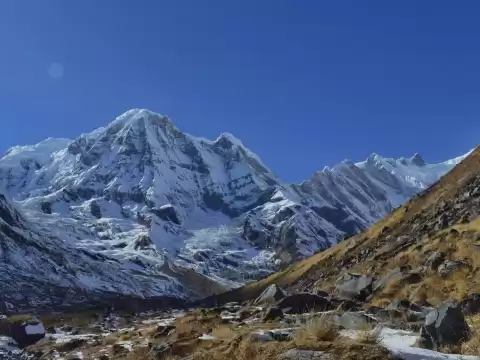A Complete Guide To Everest Base Camp Trek- 2022/2023
Thousands of enthusiastic hikers around the world have an ultimate dream to reach Everest Base Camp...

Bhutan, nestled in the Eastern Himalayas, is a land of stunning landscapes, vibrant culture, and profound spirituality. Known as the "Last Shangri-La," this tiny kingdom has managed to preserve its traditional lifestyle and pristine environment, making it a unique destination for travelers seeking both adventure and tranquility. Here's a detailed guide to planning your unforgettable tour to Bhutan.
Bhutan is a country like no other. It measures its success by Gross National Happiness (GNH) rather than Gross Domestic Product (GDP), emphasizing the well-being of its citizens and the health of its environment. This philosophy permeates every aspect of life in Bhutan, from its well-preserved cultural heritage to its commitment to sustainable tourism. Visitors are often struck by the genuine friendliness of the Bhutanese people, the stunning architecture of the dzongs and monasteries, and the unspoiled natural beauty that surrounds them.
All international tourists (excluding citizens of India, Bangladesh, and the Maldives) need a visa to enter Bhutan. Visas are issued only through licensed Bhutanese tour operators or their international partners. The process is straightforward but requires booking your trip through one of these operators.
The best times to visit Bhutan are during the spring (March to May) and fall (September to November) seasons. These months offer pleasant weather and are ideal for trekking and sightseeing. The famous Paro Tshechu festival, held in spring, is a major attraction.
The main international airport is Paro International Airport, served by Druk Air and Bhutan Airlines. Internal transportation is primarily by road, with a network of well-maintained highways connecting major cities and tourist sites.
Paro, home to the country's only international airport, is often the first stop for visitors. Highlights include:
Paro Taktsang (Tiger’s Nest Monastery): Perched on a Cliffside, this iconic monastery is a must-visit. The hike up to the monastery is challenging but rewarding, offering breathtaking views.
Rinpung Dzong:A stunning fortress-monastery that houses the district Monastic Body and government offices.
National Museum of Bhutan: Housed in the Ta Dzong, this museum provides insight into Bhutanese culture and history.
Festivals
Bhutanese festivals, or Tshechus, are vibrant displays of dance, music, and religious rituals. The Paro and Thimphu Tshechus are among the most popular, drawing large crowds of locals and tourists alike.
Traditional Crafts
Bhutan is renowned for its traditional arts and crafts, known as Zorig Chusum. Visit local workshops and see artisans at work, creating intricate textiles, pottery, and woodwork.Cuisine
Bhutanese cuisine is characterized by its use of chili peppers and cheese. Must-try dishes include Ema Datshi (chili and cheese stew), Phaksha Paa (pork with red chilies), and Red Rice. Don’t forget to try Ara, a traditional alcoholic beverage.
Druk Path Trek
This is one of the most popular treks in Bhutan, connecting Paro and Thimphu. It passes through beautiful landscapes, including rhododendron forests, high ridges, and crystal-clear lakes.
Jomolhari Trek
A challenging trek that offers stunning views of Mount Jomolhari, one of Bhutan's highest peaks. The route passes through remote villages, high mountain passes, and pristine wilderness.
Snowman Trek
Considered one of the most difficult treks in the world, the Snowman Trek takes you through the remote Lunana region. It’s a 25-day journey that requires excellent physical fitness and preparation.
Bhutan is committed to "High Value, Low Impact" tourism to preserve its cultural heritage and natural environment. This means that tourism is regulated, and a minimum daily package fee is required for visitors. This fee covers accommodation, meals, transportation, and a licensed guide, ensuring that your visit benefits the local economy and community.
Conclusion
A tour to Bhutan is more than just a holiday; it's a journey into a land where tradition and modernity coexist harmoniously, and where nature and spirituality are deeply intertwined. Whether you're exploring ancient monasteries, trekking through pristine landscapes, or immersing yourself in local culture, Bhutan offers an experience that is both enriching and unforgettable. Embrace the magic of the Last Himalayan Kingdom, and let Bhutan leave an indelible mark on your heart.

Thousands of enthusiastic hikers around the world have an ultimate dream to reach Everest Base Camp...

Mount Everest, the tallest peak on Earth, standing at a staggering 29,032 feet above sea level, beck...

Annapurna Base Camp, often abbreviated as ABC, is a renowned trekking destination nestled in the hea...
